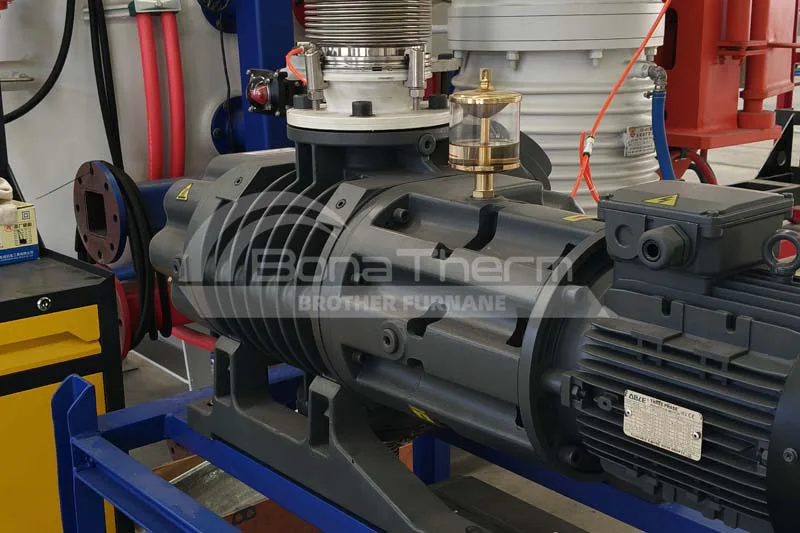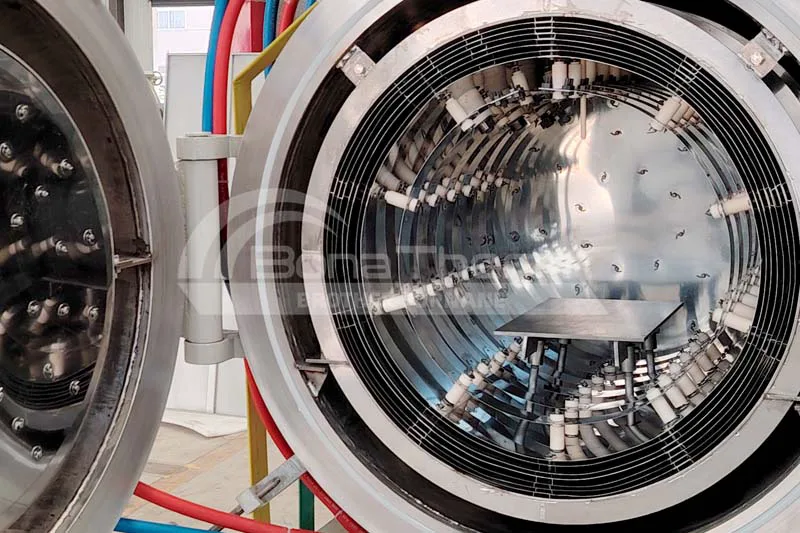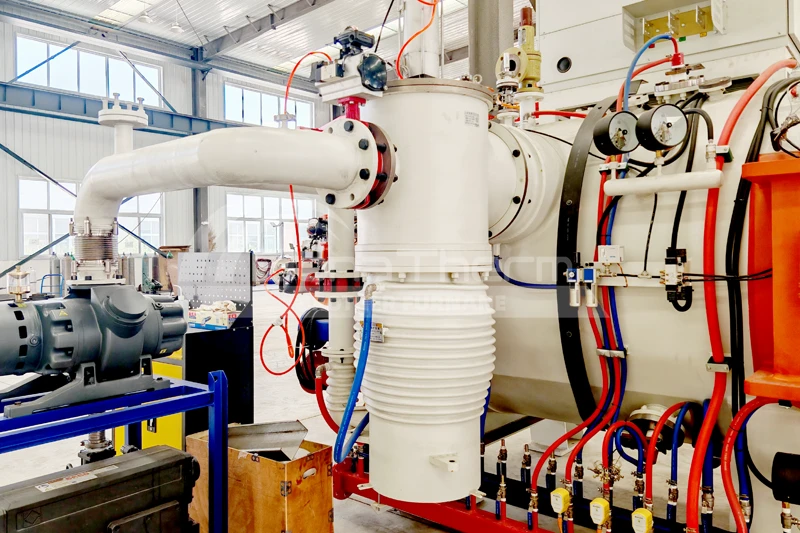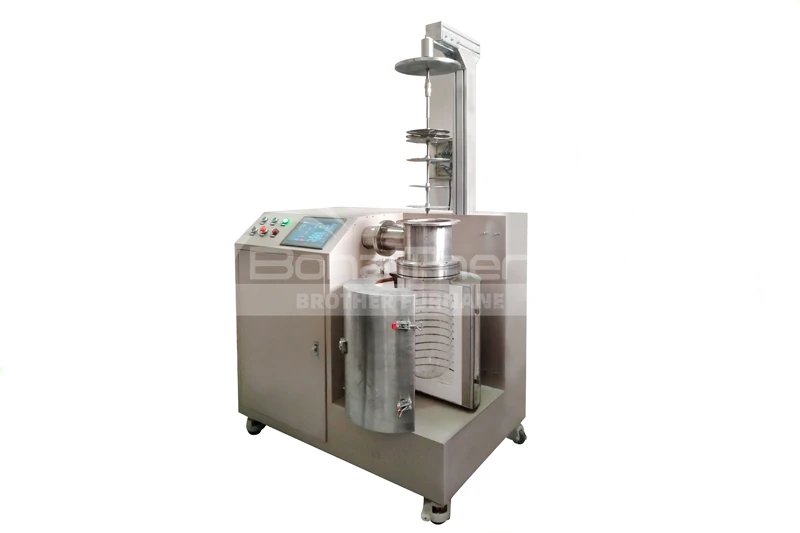Mastering the Operation of a Gas Quenching Vacuum Furnace
Gas-quenching vacuum furnaces are essential in modern vacuum heat treatment,
providing a clean, efficient, and precise method for processing materials.
Unlike traditional methods, these furnaces use high-pressure gas quenching to deliver unparalleled uniformity and quality. Industries such as electric vehicles, aerospace, and tool manufacturing heavily rely on this technology to produce high uniformity in heat-treated parts with superior efficiency.
This guide from Brother Furnace aims to educate operators and buyers about how to properly use a gas-quenching vacuum furnace, highlighting its operation, maintenance, and troubleshooting while emphasizing its critical role in sustainable heat treatment solutions.
By following these guidelines, you can maximize performance, reduce operational costs, and ensure safety.
Understanding the Gas Quenching Vacuum Furnace
The Basics of Gas Quenching Vacuum Furnaces
A gas-quenching vacuum furnace is an advanced heat treatment system that
employs a controlled atmosphere and rapid cooling using gas. It is specifically
designed to meet the needs of high-precision industries requiring uniformity in
heat treatment.
Key components include:
1. Vacuum Chamber: Provides a contamination-free environment.
2. Heating Elements: Deliver consistent and precise temperature control.
3. Vacuum Pump: Removes air to maintain an inert environment.
4. Gas Quenching System: Introduces cooling gases such as nitrogen or helium at high pressures for rapid cooling.
5. Control System: Ensures process parameters are monitored and adjusted as needed.
Types of Quenching Gases and Their Applications
The gases used in inert gas quenching play a significant role in determining cooling rates and material quality:
● Nitrogen: A cost-effective option commonly used for general
applications.
● Argon: Provides excellent inert properties for sensitive materials prone to oxidation.
● Helium: Offers the fastest cooling rates due to its high thermal conductivity, making it ideal for applications requiring rapid cycles.
Advantages Of Traditional Quenching Methods
Compared to conventional quenching techniques, gas-quenching vacuum furnaces offer several benefits:
● Energy Efficiency in Furnaces: Use less energy than oil or water-based quenching systems.
● Low Pollution Manufacturing Processes: Eliminate the disposal challenges associated with quenching oils.
● High Uniformity in Heat-Treated Parts: Essential for components in aerospace and automotive industries.
● Custom Vacuum Furnace Design: Allows adaptability for specific applications.
Pre-Operation Procedures
Proper preparation ensures efficient and safe operation. Follow these steps before starting a gas-quenching vacuum furnace:
Inspection Checklist
1. Vacuum System: Check seals, gaskets, and pump functionality.
2. Heating Elements: Ensure they are free from damage or debris.
3. Gas Supply: Verify the gas levels and connection integrity.
Preparing the Workload
● Clean all materials to prevent contamination during the process.
● Arrange components to allow maximum exposure to the heat source and quenching gas.
Configuring the Control System
Input process parameters, such as:
● Target temperature.
● Heating rate and duration.
● Quenching gas type and flow rate.
● Cooling cycle duration.
Step-by-Step Operation Guide
Loading the Furnace
Carefully load the prepared materials into the vacuum chamber, ensuring even
spacing to allow uniform heat distribution.
Creating a Vacuum
Activate the vacuum pump to remove air and moisture, achieving the inert atmosphere heat treatment environment required for oxidation-free processing.
Heating Cycle
Gradually heat the materials to the desired temperature. Use the control system to monitor and adjust the temperature profile for precise results.
Gas Quenching Process
Introduce the selected quenching gas into the chamber at high pressure. This high-pressure gas quenching process rapidly cools the materials while preserving their structural integrity and achieving uniformity in heat treatment.
Cooling and Unloading
After quenching, allow the chamber to cool before safely removing the heat-treated parts. Ensure all components have reached a safe handling temperature.
Safety Precautions
Operating a gas-quenching vacuum furnace involves managing high temperatures, pressures, and gases. To ensure safety:
● Wear Personal Protective Equipment (PPE): Gloves, goggles, and heat-resistant clothing.
● Follow Gas Safety Measures: Use secure gas storage and check for leaks before operation.
● Be Aware of Emergency Procedures: Familiarize yourself with the furnace’s shutdown process and ensure fire suppression systems are accessible.
Maintenance Tips
Regular maintenance extends the life of your gas-quenching vacuum furnace and
ensures consistent performance.
Routine Cleaning and Inspection
● Remove residue and debris from the vacuum chamber after each cycle.
● Inspect critical components like heating elements and seals for wear or damage.
Vacuum System Maintenance
● Test the vacuum pump regularly and replace filters when needed.
● Use a leak detection system to identify potential issues in the vacuum lines.
Gas System Checks
● Ensure the gas flow system is free of blockages or leaks.
● Replace gas cylinders promptly to maintain uninterrupted operation.
Preventive Maintenance Schedule
Develop a maintenance schedule that includes periodic inspections, component replacements, and system recalibrations.
Troubleshooting Common Issues
Vacuum Leaks
● Identify leaks using helium leak detectors or pressure decay methods.
● Replace worn-out gaskets or seals to restore vacuum integrity.
Temperature Inconsistencies
● Recalibrate thermocouples and control systems.
● Inspect heating elements for uneven wear or damage.
Gas Flow Problems
● Check for clogged lines or faulty valves.
● Verify the pressure settings on the gas supply system.
Control System Errors
● Update the furnace software and reset control parameters if errors occur.
● Conduct regular diagnostic checks on the electronic components.
Optimizing Furnace Performance
Fine-Tuning Parameters
Adjusting process parameters such as gas flow rates, quenching pressure, and heating profiles can optimize results for specific materials.
Energy Efficiency Practices
● Reduce idle times to conserve energy.
● Use advanced insulation materials to minimize heat loss.
Enhancing Product Quality
By leveraging advanced vacuum furnace technology, manufacturers can achieve precision and uniformity in applications such as tool steel hardening and electric vehicle component production.
Applications of Gas Quenching Vacuum Furnaces
Automotive Industry
● Applications in Electric Vehicles: Ensures lightweight, durable parts with superior mechanical properties.
● Tool Steel Hardening: Provides robust tools for manufacturing and machining.
Aerospace Industry
● High Uniformity in Heat-Treated Parts: Meets stringent safety and performance standards.
General Manufacturing
● Supports low-pollution manufacturing processes for a sustainable future.
● Offers custom vacuum furnace designs to accommodate specialized needs.
Conclusion
Operating a gas-quenching vacuum furnace is a meticulous process that requires preparation, precision, and ongoing maintenance. These furnaces provide significant advantages, including fast cycle times, energy efficiency furnaces, and low-pollution manufacturing processes, making them indispensable for modern industries.
By understanding their operation and benefits, you can improve productivity, reduce costs, and ensure the highest quality in heat-treated parts.
As a professional manufacturer, Brother Furnace offers state-of-the-art
industrial furnace solutions tailored to your needs. Whether you require custom
vacuum furnace designs or assistance with advanced vacuum furnace technology,
our team is ready to help.
Contact us to learn more about our range of gas-quenching vacuum furnaces and discover how they can revolutionize your heat treatment processes.











